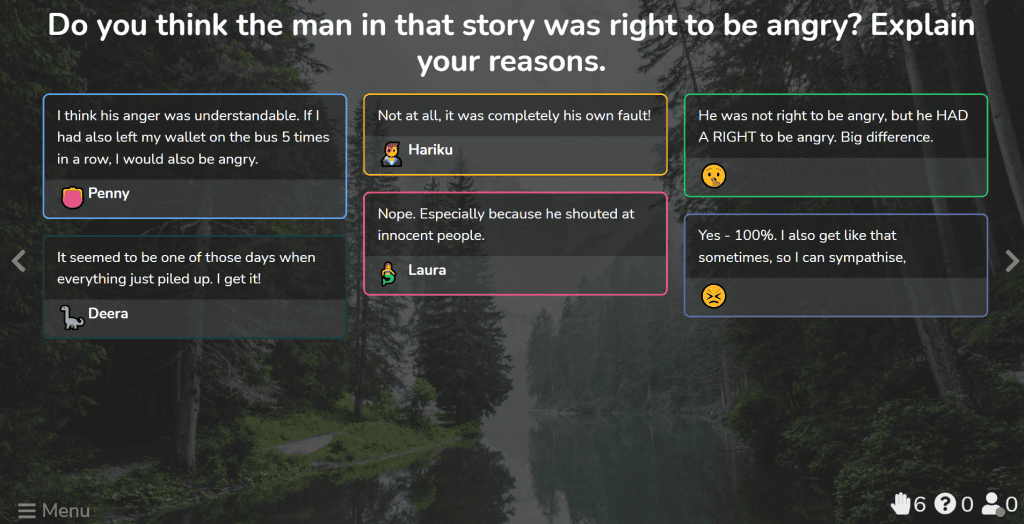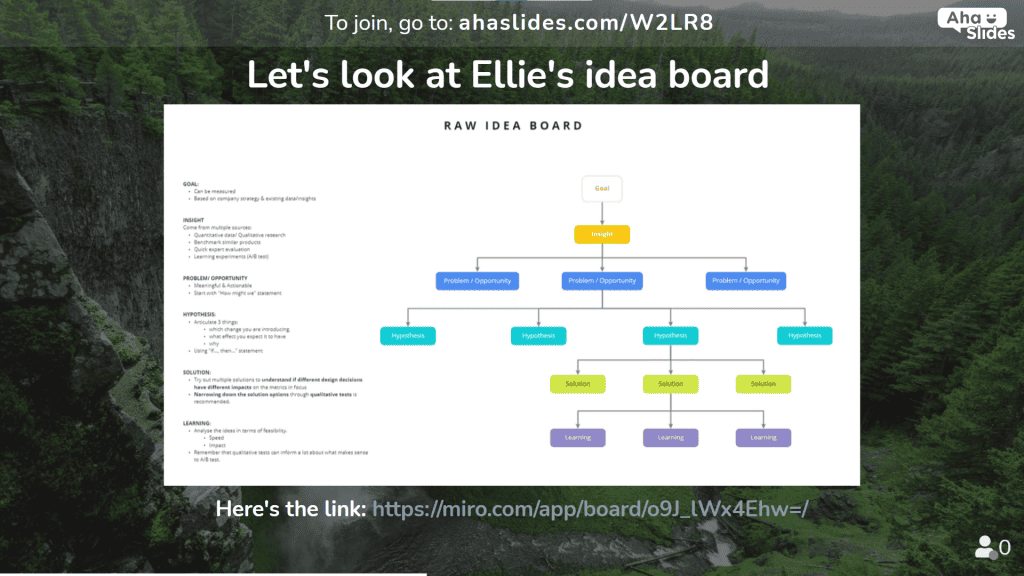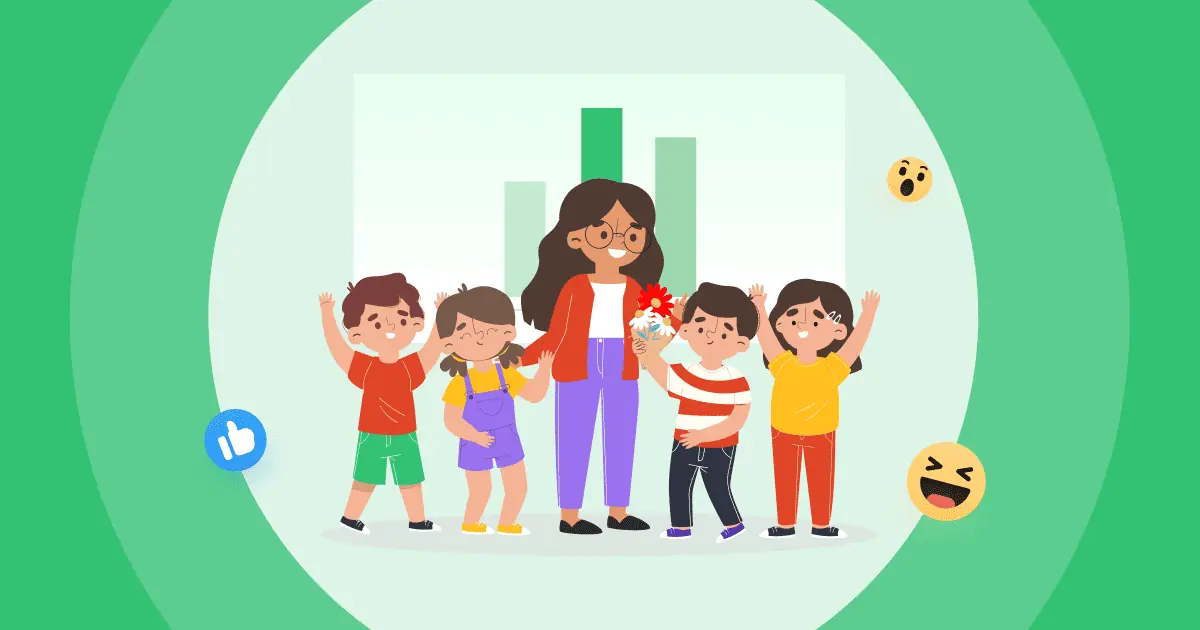We hear it all the time: a great teacher is a great motivator. It's a simple idea, but it rests on a concept educators have been battling for decades: how do I motivate my students?
Well, demotivation breeds demotivation. If you can't motivate your students, how can you motivate yourself to teach them?
It's a vicious cycle, but the 12 tips below for gaining student engagement can help you stop the rot.
How to Increase Student Classroom Engagement - The Guide
- Why does Student Classroom Engagement Matter?
- #1 - Use Student Opinion
- #2 - Get 'em Talking
- #3 - Breed Competition with a Quiz
- #4 - Set up Q&A Checkpoints
- #5 - Let them Teach it
- #6 - Mix up your Style
- #7 - Make it Relevant
- #8 - Give them a Choice
- #9 - Embrace the Technology
- #10 - Flip the Script
- #11 - Take a Gallery Walk
- #12 - Never Forsake Group Work
More Classroom Management Tips with AhaSlides
- Classroom Management Strategies
- Ways to Improve Student Engagement in Online Classrooms
- Innovative Teaching Methods

Start in seconds.
Get free education templates for your ultimate interactive classroom activities. Sign up for free and take what you want from the template library!
🚀 Get Free Templates☁️
Why does Student Classroom Engagement Matter?
It can be easy to write off disengaged students as unsavable or even to write off 'student engagement' as a concept for teachers with more time on their hands. But by diving into this topic, you've shown motivation to motivate. And that's motivational!
You’ve taken the right step towards improving your students’ learning. If you're a student seeking assistance with your assignments, consider seeking help from the best essay writing service. These services can provide valuable support in honing your writing skills and ensuring the success of your academic endeavours.
- 53% of American students are not engaged or actively disengaged in lessons. (Gallup)
- By the end of the 2020 academic year, 1.3 million students had stopped engaging because of the switch to distanced learning. (Remind)
- Engaged students are 2.5x more likely to conclude that they get excellent grades in school. (Gallup)
Disengagement is an epidemic, but there are always techniques to stop it. The tips below will help you rekindle your student's innate curiosity to learn, whether offline or online, using online learning student engagement techniques.
4 Easy Wins
The four techniques below are the quickest and easiest ways to capture student interest. They require very little work to set up and they're easily understandable for all levels of your students.
#1 - Use Student Opinions
Polls are decisive because polls connect your subject matter with the centre of any young person's universe - themselves.
I kid, of course. Still, letting them contribute their opinion to something, and seeing how their opinion fits within the surrounding system, can do wonders for student attention.
Giving them a participating voice in your lesson has numerous benefits, but none more so than letting students know that their opinion, not your subject matter, is the real star of the show here.
Take a look at this question below, which can be asked in an ESL lesson.
This poll works great for engagement because:
- The question is all about them.
- Students can instantly see how their opinion stacks up with others around them.
- You, as a teacher, can learn about aspects of your students that you didn't know before.
From a solid and diverse poll, strategy number 2 becomes the natural next step...
#2 - Get 'em Talking
There's one learner engagement strategy that's more comprehensive than a poll. A full-blown discussion.
Having students voice their own nuanced opinions in an eloquent and measured manner is one of the ultimate dreams of teaching. Sadly, this dream occupies the finest of lines in the classroom between no one speaking up and absolute chaos.
And this is why tech exists.
Many ed-tech tools encourage written responses to open-ended questions, which helps everyone to have their voice heard and keep things completely orderly.
Once submitted, the answer enters a level playing field with all the others. You read out and elicit discussion from each equally valuable answer on the board, all in an orderly manner.
And the shy kids? They can enter their answer anonymously, meaning there's no fear of judgement for what they wrote. For the strong contingent of every class that has self-conscious students, the simplicity of anonymous answering can be an incredible boost to engagement.
Want to read more? 💡 We've got a full guide on how to hold a student debate in 6 steps!
#3 - Breed Competition with a Quiz
The overhanging force of competition is absolute gold dust for teachers. Unfortunately, aside from a haphazard and ultimately meaningless star reward system, competition as a student classroom engagement strategy is still wildly underused.
Competitions have much to offer in education, no matter what your view is.... and should enjoy broader acceptance.
Dr. Tom Verhoeff, Eindhoven University of Technology.
What's one of the most engaging types of competition we often partake in during adult life? Well, it's a live quiz if you're anything like me. By quizzes, I don't mean exams or tests; I mean a good quiz with a leaderboard, fun, drama and one hugely engaged set of participants.
Either solo or in teams, the rush of students competing against their peers can be a whirlwind of engagement. If the stakes are high (i.e., the prize is good), quizzes can be one of the most effective student classroom engagement techniques in this list.
Here are some tips for creating a great educational quiz:
- Keep it to around 10 questions - Let your students get into it, but don't let them tire of it.
- Mix the difficulty - Keep everyone on their toes.
- Use technology - In my personal experience, pen-and-paper quizzes are hard to manage in a big class. Try running your quiz on professional Edtech software.
Protip 👊 Mix things up with a spinner wheel. You can try different formats, like the Million Dollar Race, or use it as a bonus for your quiz!

#4 - Set up Q&A Checkpoints
One of the biggest contributors to disengagement isn't to do with behaviour, it's to do with comprehension. No matter the quality of the subject material, if your students don't understand it, you're going to be looking out over a room of zoned-out faces.
Sure, you can ask them if they understand your explanation of a new concept, but how many typically self-conscious students are going to admit, in front of everyone, to not following along?
In the age of Edtech, the answer is Q&A checkpoints. Here's why they work:
- They're anonymous - Students can remain nameless and ask anything without fear.
- They're detailed - Students have time to thoughtfully lay out what they don't understand.
- They're organised - All answers are written, can be sorted into different categories and remain permanent.
Ignite real learning.
Try all of the strats above for free. Get interactive in your online or offline classroom!

4 Long Plays
These four techniques are a bit of a long game. They're small changes to your teaching approach, requiring time to understand and set up.
Still, once you've got them in the locker, these can be some of the most engaging techniques to use in the classroom.
#5 - Let them Teach it
One of the tragedies of classroom disengagement is that 85% of school assignments are too rigid to allow for higher thinking skills. This, even though thinking higher than a restrictive syllabus, is often what makes lessons engaging.
This is hard to overcome for a teacher alone, but giving students the responsibility of teaching part of the subject matter is a fantastic remedy.

Cycle back to your own teacher training. Were you more engaged during textbook exercises on behavioural management or when facing a sea of young faces during an observed practical? At which point were you thinking and operating at a higher level?
Here are a few tips on turning students into teachers:
- Do it gradually. There's a reason this is a 'long play' strategy for student classroom engagement. Students need time and practice to teach anything, even small groups. Space out the practice time throughout the year.
- Keep it timed. Give them a brief time slot to teach so as not to overwhelm them. When teaching, keep an eye on the clock so that they understand that time is a crucial factor in teaching.
- Raise your expectations. Students are often capable of way more than we give them credit for. Give them a challenge and watch them meet it.
#6 - Mix up your Style
The many approaches to learning styles are fundamentals of teacher training. We know them, sure, but as much as we may think we appeal to visual, auditory and kinaesthetic learners, the chances are that we're failing at least one of those core student groups.
If you're a kinaesthetic learner, you need more than a token practical activity thrown your way every week. Auditory learners need more than 2 discussions each semester. They need consistent stimulation to stay engaged in lessons.
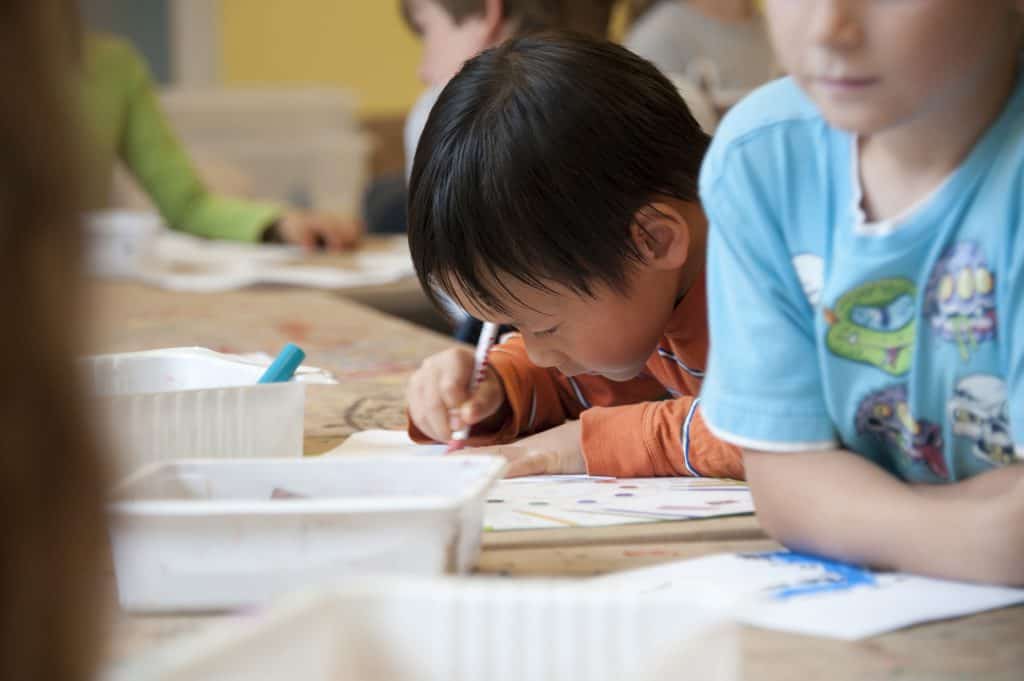
For every lesson, make sure there's at least one activity for each learning style. These could be...
- Illustrating concepts, taking notes, watching videos, playing quizzes - (Visual)
- Listening to podcasts, having discussions, reading aloud, creating music - (Auditory)
- Doing experiments, creating something physical, roleplay, moving around the classroom - (Kinaesthetic)
Remember, this may be a lot of work, but it's worth it. As your lessons become less predictable, your students stay tuned in for longer.
Protip 👊 Define each student's learning style with these 25 questions.
#7 - Make it Relevant
When I was teaching English in Vietnam, I noticed that all textbooks exclusively referenced British or American culture. According to the National Council of Teachers of English (NCTE), they were much more likely to tune out because my Vietnamese students found nothing relevant to their culture in lessons.
The problem goes beyond culture. If there's nothing in your lessons for students to relate to, why should they bother learning the topic?
For teenage students especially, linking your topic with something relevant to their interests is more or less essential.
Discovering these interests can be done through a simple survey. In the 90s, the state of Connecticut ran one called the Interest-a-Lyzer in public schools, which is far too lengthy and far too 90s for modern use, but the questions it asks can be used for your survey. (This also has the bonus of being a good writing exercise!)
Once you've got answers back from your students, you can shape explanations and exercises around their interests.
#8 - Give them a Choice
For older students, there are two things that all activities need to have: relevance (which we just discussed) and choice.
At an age where your students find their way in the world, the choice is everything. Education is very rarely a matter of choice for learners, but giving them choices in the classroom can offer an amazing increase in student motivation.
Here are a few ways to incorporate choice into your classroom:
- Activities - Provide a bunch of activities as an exercise, then let students choose.
- Structure - Lay out the lesson's structure and let them choose how they want to proceed.
- Decor - Let them have a say in the layout of the classroom.
It's best to introduce choice slowly into your lessons. Most students are so devoid of choice at school, and possibly in their lives, that they're often unsure how it works in the classroom.
Want to read more? 💡 Check out this excellent account of how a teacher increased student focus by offering choice.
4 for Online Learning
Online learning is becoming more and more widespread, but keeping students motivated across distances seems to be getting tougher and tougher.
Here are 4 tips to try something different in your remote classroom, or you can get a bunch more here!
#9 - Embrace the Technology
When pretty much all lessons went online in 2020, there was an understandable tendency for teachers to stick with the offline methodology they knew. That has flown in the early stages; it won't fly now.
The wealth of educational, creative and collaborative tools has revolutionised the virtual classroom. There are ways to do things that neither teachers nor students would have dreamt of at the dawn of the Coronavirus.

Here are a few free tools that teachers and students can use in online lessons:
- AhaSlides 📊
An interactive presentation maker that allows students to host a topic and create live polls, online quizzes and brainstorms about it. It's one of the innovative teaching methods that buzzes around teachers' social circles. - Colorcinch 📷
A simple but powerful piece of photo editing and graphic design software. Colorcinch has an extensive collection of vector graphics, stock photos, and special effects. - Canva 🖌️
An easy way to create images, posters, brochures, pamphlets etc. Canva has a vast library of templates and premade elements to build on. - Miro 🗒️
A communal whiteboard that students can use to brainstorm illustrates thinking processes and design solutions with each other simultaneously. - FlipGrid 📹
A video platform where teachers can pose questions and receive video responses from students.
Students of a certain age have a natural curiosity for technology, so embracing it can be a perfect strategy to increase learner engagement. However, be wary of overdoing it - too many new tools in one go can be distracting for students.
#10 - Flip the Script
'Flipped learning' refers to students learning concepts at home, then using class time to actively discuss and solve problems related to the learned concept. Think of it as the usual schoolwork and homework relationship just... flipped.
In the remote schooling world, where schoolwork and homework are done at the same desk, flipped learning is more about swapping the roles of synchronous work (with the live teacher) and asynchronous work (without the live teacher).
There's a lot of evidence that points towards a flipped learning revolution in remote schooling. One of the most encouraging stats comes from a survey from the Flipped Learning Network - 80% of teachers trying the method reported improved student motivation.
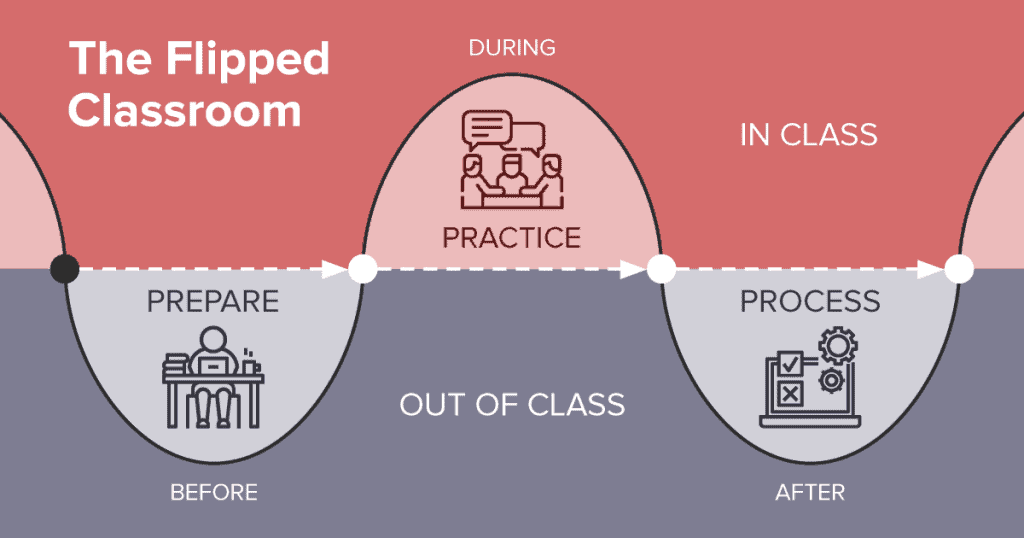
Why? Check out some of the benefits of flipped learning for increasing student participation:
- In class, students can participate at their own pace. Lower and higher-ability students can concentrate on tasks at the right level for them.
- More autonomy and freedom of ownership of their studies put students in control - a hugely motivating factor.
- Flipped learning gives students something to do rather than treating them as passive ingesters of information. This sets your lessons apart from other standard lessons throughout the school day and encourages students to get involved.
Want to give it a go? Try this in your next online class:
- Before the lesson: Create a shared folder of topic material for students (videos, podcasts, taped lectures, reading resources, etc.) and tell them to progress through each material.
- At the start of the lesson: Give students a quick quiz to gauge understanding of the topic, then group each student by their level of understanding.
- During the lesson: Present each group with stimulating activities (discussions, collaborations, problem-solving) to consolidate understanding.
Want to read more? 💡 Check out this great introduction to flipped learning by Lesley University
#11 - Take a Gallery Walk
How much more motivated would you be if you knew that your work was going to be shown to your peers? Probably quite a bit. That's the idea behind a gallery walk.
A gallery walk is a slideshow in which students' works are displayed for each other to see. While viewing a piece of work, students make observations and note down their feelings on the piece.
Here's why it's such a great student-classroom engagement activity:
- It increases student motivation through their inherent sense of competition.
- It increases student focus as they view works from their peers rather than someone unrelated to them.
- It increases student freedom of expression, which is always a positive for motivation.
On your part, a gallery walk is super simple to set up. Just create a presentation with room for noting down comments, like the one below.
#12 - Never Forsake Group Work
Of all the learning formats that fell by the wayside in the big migration to distanced learning, the biggest casualty was group work.
At a time when students needed social interaction and collaboration the most, many teachers decided that translating group work to the online world was an impossible task. Students spent most of their 'learning' time feeling completely isolated from their classmates.
That takes a severe toll on learner motivation. Here are a few group work tips to fight it:
- Give them access to file-sharing software, like Google Drive.
- Give them access to kanban board (task assigning) software, such as Trello.
- Use 'breakout rooms' on Zoom and other video calling software to simulate real-world group work.
- Break large projects into multiple small tasks to be completed in groups.
Frequently Asked Questions
How do you measure student engagement in the classroom?
There are different ways to measure student engagement quantitatively and qualitatively in your classroom, such as:
- Observational scales - Teachers objectively record on-task behaviours like active participation, eye contact, questions asked at set intervals.
- Time on task - Track the percentage of total time students are actively engaged with instructional activities versus off-task.
- Student self-reports - Surveys measure perceived cognitive, behavioural and emotional engagement through questions on attention, value, enjoyment of lessons.
- Homework/assignments - Assessing quality and completion of independent work provides insights into individual engagement.
- Participation logs - Record frequency counts of things like hands raised, and contributions to discussions.
- Test scores/grades - Academic performance is linked to engagement, though not solely determined by it.
- Teacher rating scales - Questionnaires have teachers qualitatively rate class/student engagement levels.
- Informal checks - Things like responses to scaffolding questions, and on-task conversation topics.
What are the benefits of classroom engagement?
Students who are more engaged show better test scores, project quality, and retention of learning. Engaging lessons make learning more enjoyable and give students ownership, fueling intrinsic motivation.


